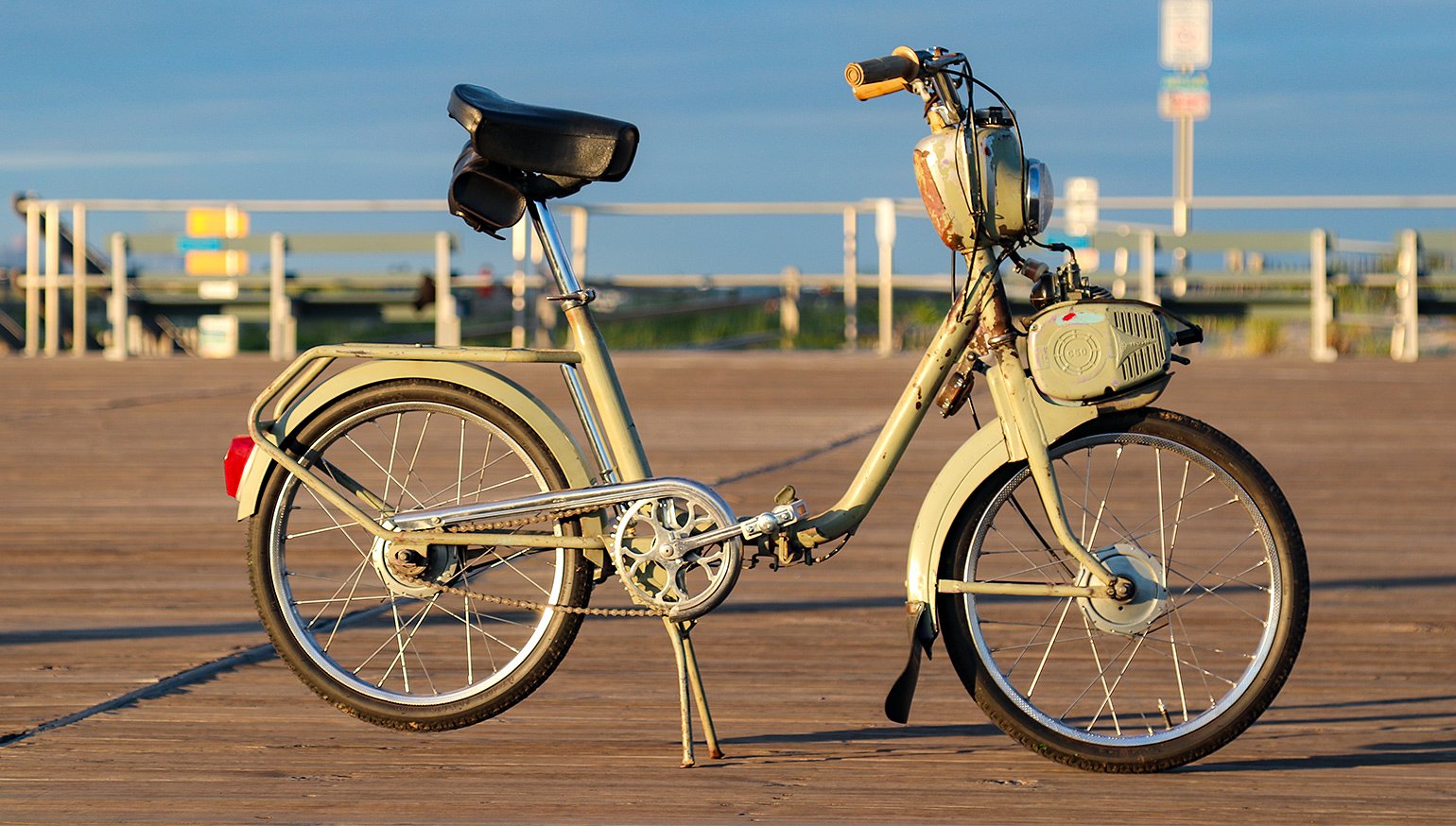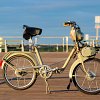“Whoa, check this bike out,” my brother laughed as he showed me a new listing on his phone. His sixth sense for bizarre vehicles on Craigslist and Facebook Marketplace is unequaled.
“FOR SALE: Unique front wheel drive design moped. Make: Zanetti. Transmission: automatic.” The longer I looked, the more this bike made my head hurt. I had to have it.
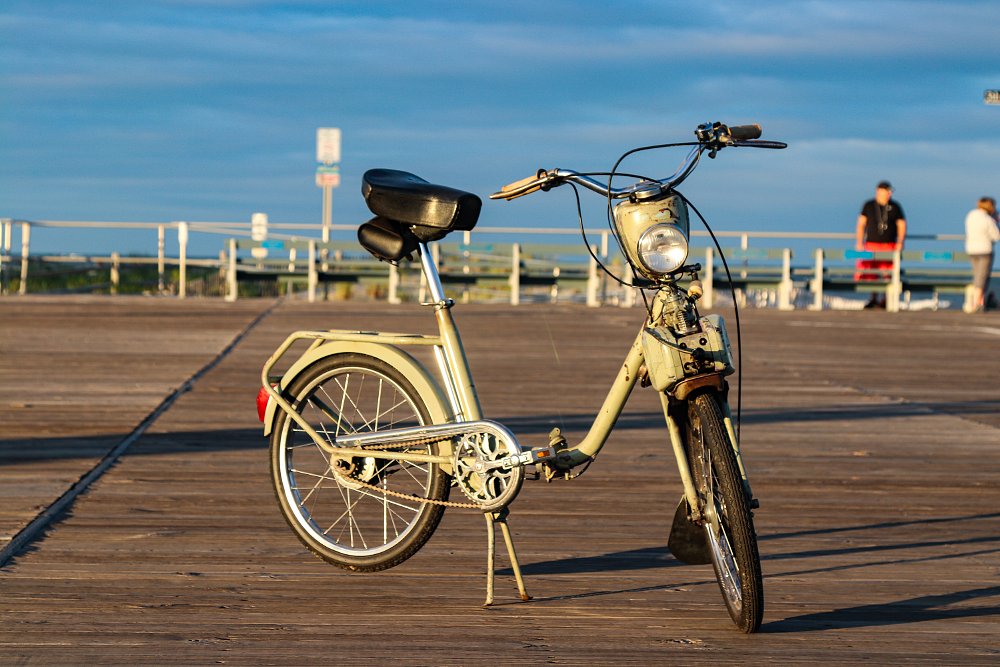
The Zanetti pays no mind to two-wheeled tradition, straying deep into ugly duckling territory and almost into parody. Even people who aren’t into mopeds or motorcycles can tell that this machine is All Wrong. So what? Fifty years later, Zanetti’s collection of bad ideas still runs. A machine cannot know that it is All Wrong. It either works or it doesn’t. This one happens to work in spite of its blasphemous design, and that’s the real reason I had to have it.
A little research identified the bike in the listing as a 1960-something Zanetti Bicizeta C50: a folding, front wheel drive moped with 20-inch wheels, one speed and a two-stroke engine displacing 42 cc. When I met the seller, I was surprised to find Zanettis stashed all over his property. Apparently they had been used as rental vehicles for New Jersey beachgoers back in the 1970s, and after rusting away for years in an uncle’s barn, the bikes were now the seller’s problem. Several of the nicer mopeds were already running with fresh premix and plugs, which was mildly encouraging. I handed over a very small wad of cash, loaded up my non-runner Zanetti, and called my brother. “Guess what I just bought?”

What little I can find of the Bicizeta’s history starts with a transportation fad in 1960s Italy. Small folding bicycles were gaining popularity, especially among urbanites with tiny apartments and short commutes. At the time, Motori Zanetti wasn’t building bicycles or mopeds — their bread-and-butter products were small industrial engines. Maybe it was Zanetti’s location in Italy’s “Motor Valley” near the likes of Ducati, Ferrari, and Moto Guzzi, or perhaps it was an employee’s sudden inspiration while pedaling to a cafe, but somebody somewhere thought the folding biciclettas would be improved with Zanetti power. Apparently these visionaries hadn’t heard the old joke. Q: How do you make the most efficient and reliable moped? A: Remove the engine.
Weird feature number one: It folds in half
The entire bike splits in two from a connection at the bottom of the frame's "U" shape. It’s so easy to split that it makes me nervous.
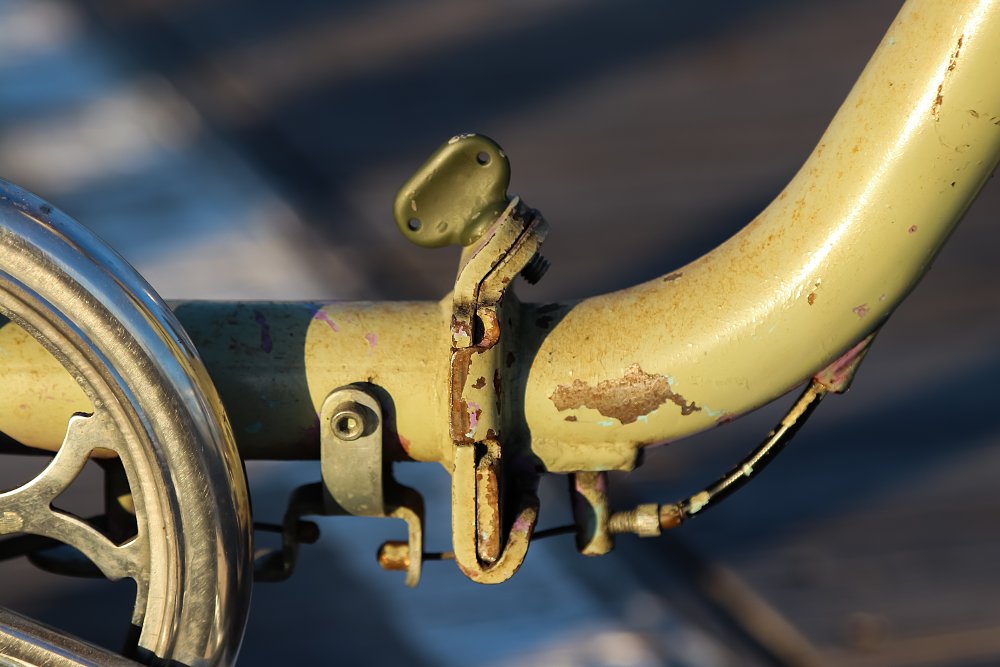
Some Bicizetas locked together with a chrome-plated bailing latch like old luggage. My example came from the factory with the later bolt-through design. I changed the bolt to a thumbscrew to make the Zanetti’s big party trick as easy as possible. After undoing the frame connection, simply disconnect the rear brake cable and it’s ready for storage. The frame connection plates use a clever self-centering design to help reassembly.
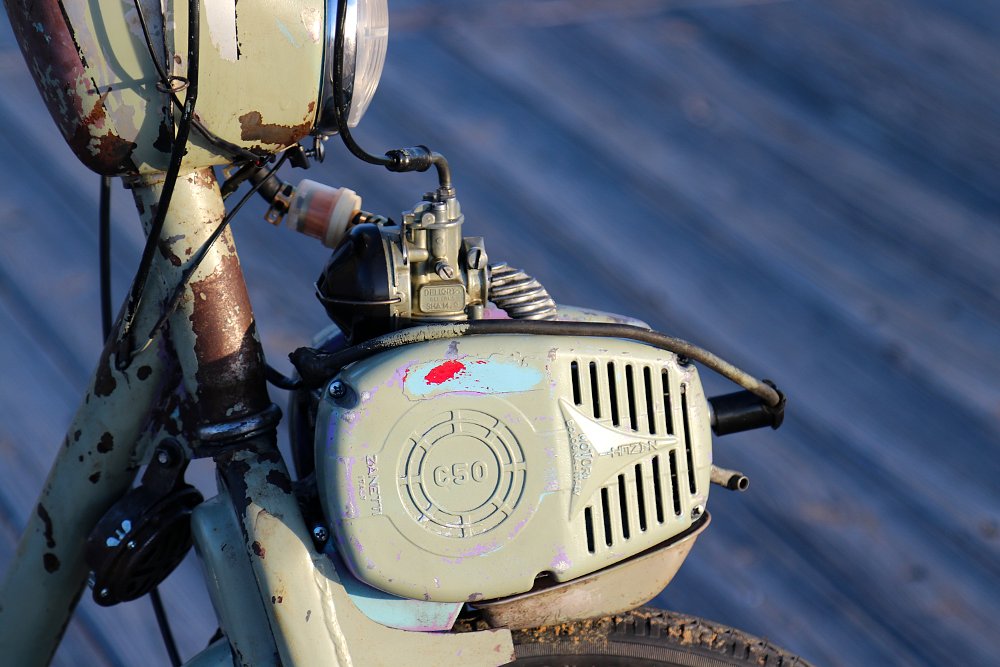
Weird feature number two: Automatic, front-wheel friction drive from a two-stroke engine
Zanetti then repurposed their industrial sprayer engine and mounted it to the fork. Instead of running a sprayer pump, this moped’s little single spins a textured roller that contacts the front tire directly for a primitive friction drive. The roller is belt-driven from a tiny clutch.
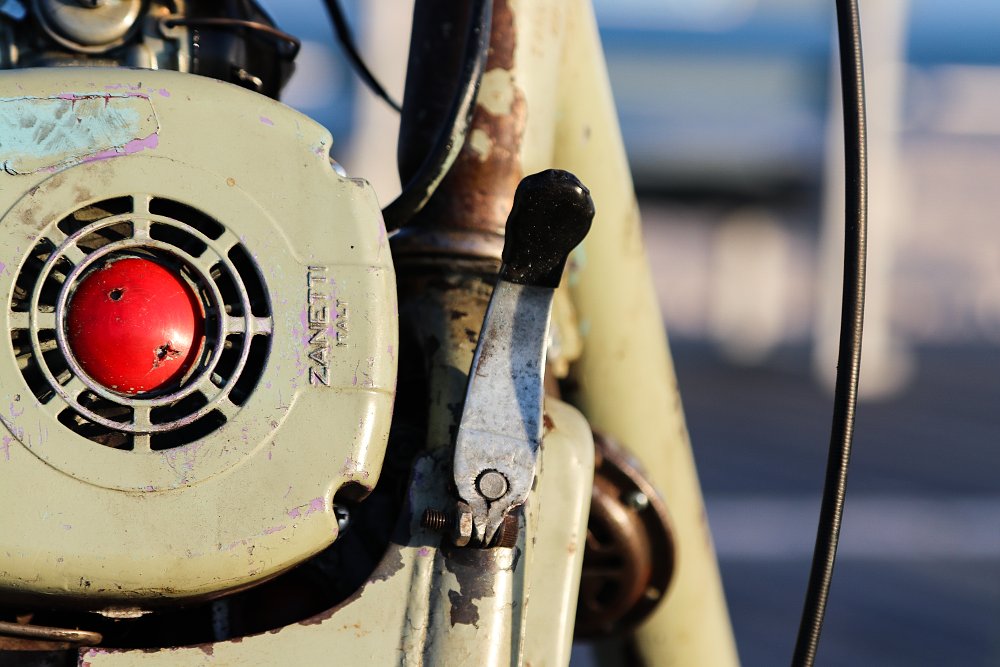
A lever on the side of the fork lowers the entire engine and roller assembly directly onto the wheel for starting and assisted riding. Raising the engine and roller allows the front wheel to spin freely like a normal bicycle. This feature is helpful when your antique Italian sprayer engine decides to take its afternoon riposo.
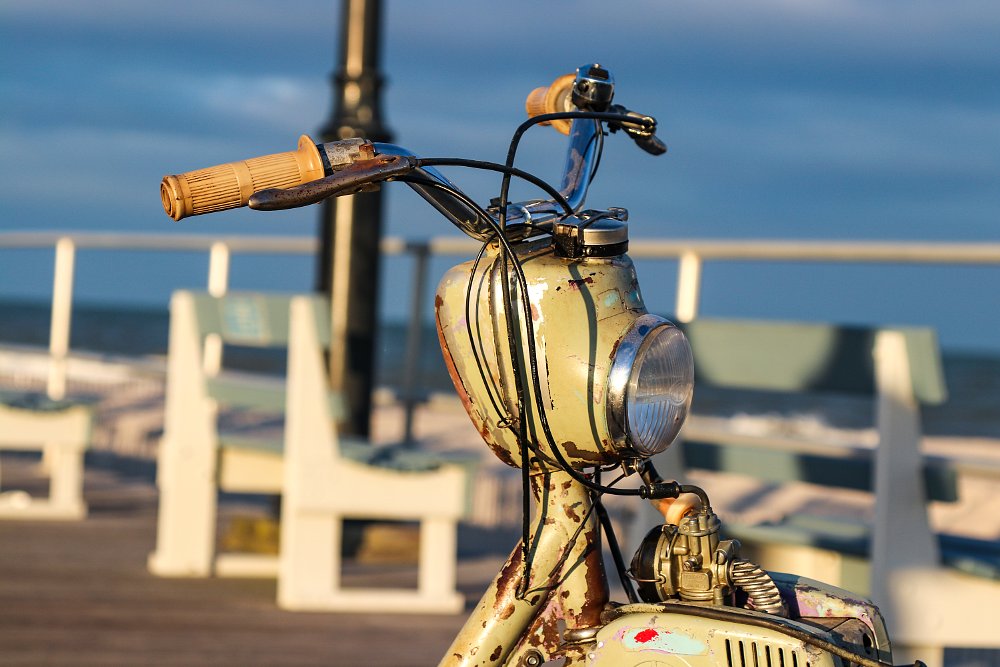
Weird feature number three: The headlight is the gas tank
Front-wheel drive solved some problems for Zanetti, but it created a few more. Where should the fuel go to feed the engine on the fork? Zanetti solved this problem by creating a miniature gas tank behind the headlight! Erik Buell would love this.

Weird feature number four: The exhaust runs through the fender
Fuel crisis averted, where could an exhaust fit on the modified bicycle fork? The creative geniuses at Zanetti routed the exhaust down under the engine and into the narrow gap between the tire and the fender, terminating just behind an oversized mud flap to catch any shmutz accumulating at the end of the two-stroke’s pipe. The flap was practically a necessity with the manufacturer’s recommended premix ratio of 20:1. (Now 40:1 with a modern oil.)
Weird feature number five: Somehow, it actually works
The result of all this development was apparently different enough from the folding bicycle that Zanetti created a new name for it: Bicizeta. Rolls of the tongue, doesn’t it? The bikes were manufactured in Bologna and exported to other markets, including the United States, where interest in mopeds and minibikes was rising. This example probably came from their Poughkeepsie, New York importer, based on the sticker I found on the rear fender.
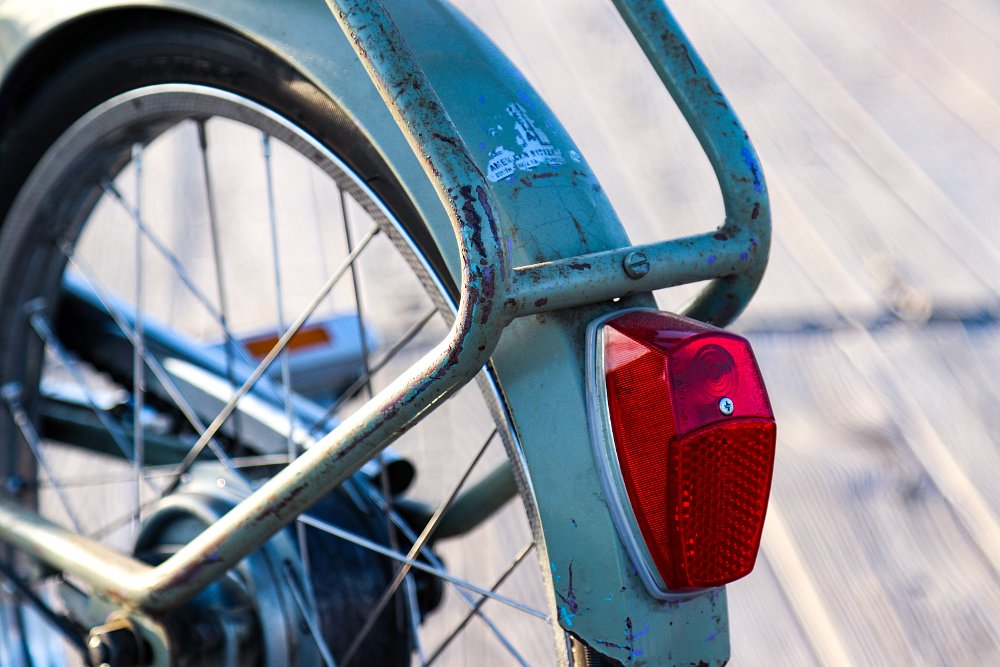
When starting a Bicizeta, turn the gas on, move the engagement lever up into the freewheel position, tap the Dell’Orto carburetor a few times for good luck, and set the choke in the down position. Point the bike at a decent straightaway, downhill if possible, and maintain a steady speed. Then reach down with your left hand and push the engagement lever to drop the friction roller onto your spinning front tire. Pop, pop, pop goes the engine until it usually catches. Twisting the throttle all the way open once warm will turn off the choke and send you barreling forward at 10 to 15 miles per hour. With the front wheel under motor power and the rear driven by the pedals, is this technically 2WD? Front-bias AWD? A hybrid vehicle?

The riding experience isn’t quite like motorcycling or bicycling. You and the engine must work together to overcome hills, carrying momentum where you can with the pedals and keeping the clutch engaged as much as possible. Remember, it’s a 42 cc engine from half a century ago, and it was gutless when new. A considerate and calculated riding mindset is required. It reminds me of riding an electric-assist bicycle that's low on battery.
The best thing about the bike will be the grins and questions from people watching it go by. They, too, are amazed by the Zanetti. There’s also the unique experience of getting to know the wants and needs of this goofy engine. This experience tests the rider’s mechanical compassion. And finally, the folding feature that Zanetti banked on is still valuable today. I can tuck the two halves just about anywhere for storage, or toss them in my trunk or trailer. Lots of pit bikes are cool, but this one is neat.
This particular Zanetti Bicizeta C 50 needed plenty of parts and TLC. The revival started with a good scrub, during which I discovered traces of its original pastel purple under sloppy coats of greenish dock paint. I re-laced the wheels, mounted new tires, sourced replacement pedals, added a fuel cap, and redid the wiring, complete with a new tail light. A fresh chrome seat post and frame pump brought some shine back to the poor bike. For a finishing touch, I added a stock-style seat bag with tools and spark plugs for the inevitable breakdowns. This is the bike’s final form, as far as I’m concerned.
Legacy, and weird feature number six: Everybody loves the Zanetti
I’m not going to pretend that the Zanetti Bicizeta matters today, or that it ever mattered. Take a look at some modern folding ebikes, though. There are shades of Zanetti in many of them.

The Zanetti Bicizeta is a conversation piece more than a mode of transportation in 2021. “What is that? How does it work? Who made it? Why is the engine/frame/headlight/exhaust like that? Can I try it? Is it legal?” The bike’s aged paint makes it look like a product of the 1940s, not the 1960s, so it draws even more attention. I think the engine now claims more hours of discussion than operation at this point. That tells me it’s something special.
Of course a folding, FWD, two-stroke, single-speed moped with a gas tank-headlight and a fender-exhaust guaranteed born-loser status. Even so, I refuse to call Zanetti’s effort a complete failure. For all their questionable qualities and general worthlessness, wild Bicizetas still roam the earth, completely unconcerned with what we think of them or where they fit in. No, this little Zanetti engine is still blowing raspberries at beach town disbelievers half a century later. It's All Wrong, all right.




